 by "ttyymmnn" (ttyymmnn)
by "ttyymmnn" (ttyymmnn)
Published 12/31/2016 at 12:35
 by "ttyymmnn" (ttyymmnn)
by "ttyymmnn" (ttyymmnn)
Published 12/31/2016 at 12:35
Tags: Planelopnik
; planelopnik history
STARS: 12
Welcome to This Date in Aviation History , getting of you caught up on milestones, important historical events and people in aviation from December 28 through December 31.
!!! UNKNOWN CONTENT TYPE !!!
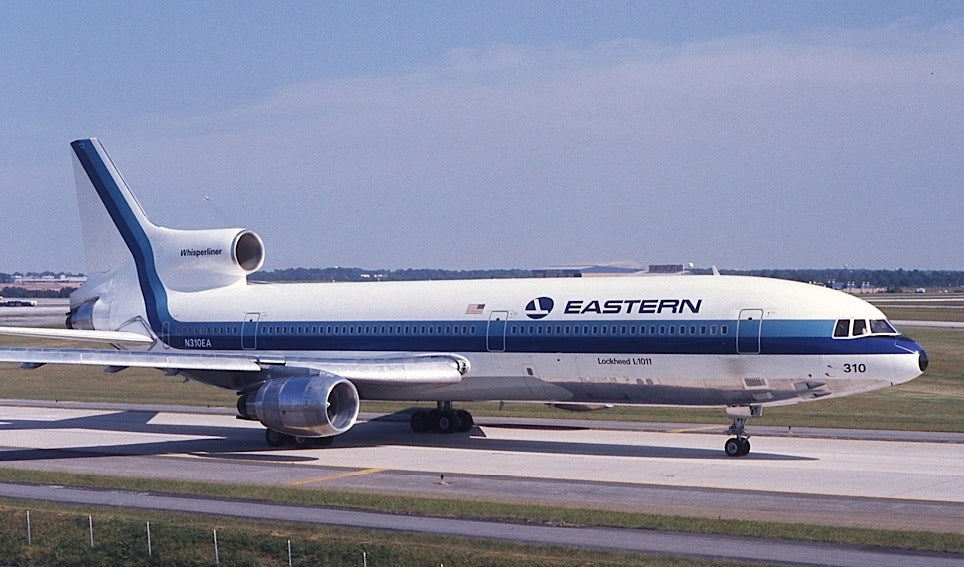
December 29, 1972 – The crash of Eastern Air Lines Flight 401. As long as there have been aircraft, there have been aircraft crashes. And, as passengers airliners got bigger and carried more passengers, the tragedy of air crashes grew exponentially. Barring outside events like terrorist attacks, most crashes are caused by pilot error or some form of equipment malfunction,and governing bodies such as the Federal Aviation Administration make recommendations either to redesign systems or improve procedures to prevent future accidents. However, the crash of Eastern Air Lines Flight 401 was found to more of an issue with how the crew failed to work together to solve a problem, and the accident prompted a re-evaluation of flight crew procedures that has had a profound effect on modern airline operations. Eastern 401 was on a regularly scheduled flight from JFK Airport in New York to Miami and carried 176 passengers and crew on board a Lockheed L-1011 TriStar (N310EA). The flight crew was highly experienced, and included an Eastern Air Lines technician who was riding in the cockpit. On approach to Miami, the flight crew lowered the landing gear, but failed to get a green light indicating that the nose landing gear was down and locked. After requesting a go-around, the crew began to investigate the problem with the gear. In doing so, the entire flight crew became so absorbed in trying to solve the problem that nobody noticed that the autopilot had become disengaged and that the airliner was slowly descending. The crew was so distracted by the faulty indicator light (the gear could have been dropped manually if necessary) that they also failed to hear a chime on the engineer’s panel that warned them of their low altitude. By the time they realized their situation, it was too late to correct the descent and the plane crashed into the Everglades ten seconds later, killing ninety-seven passengers and two flight attendants. Among the dead was the pilot, first officer, and engineer.
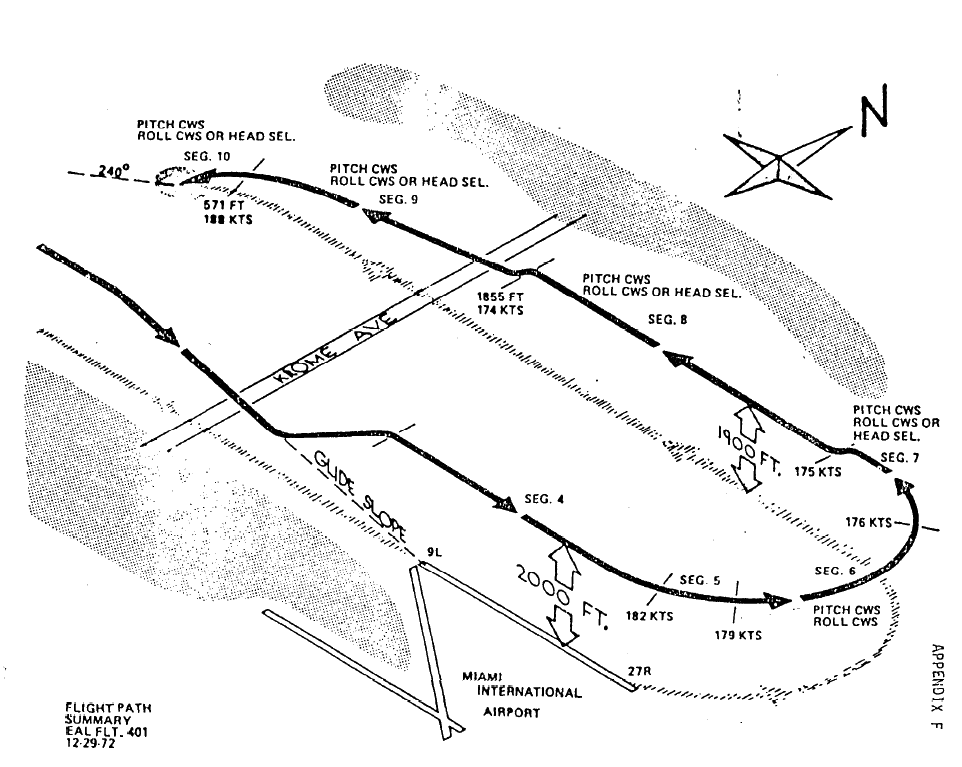
In its final report , the National Transportation Safety Board cited pilot error as the cause of the crash, specifically, “the failure of the flight crew to monitor the flight instruments during the final four minutes of flight, and to detect an unexpected descent soon enough to prevent impact with the ground. Preoccupation with a malfunction of the nose landing gear position indicating system distracted the crew’s attention from the instruments and allowed the descent to go unnoticed.” This was the first of a spate of similar accidents, and the airlines, led by United Airlines, responded by developing Crew Resource Managmemt (CRM), a system that helps the crew manage problems and assign tasks, encourages communication between senior and junior crewmen, and creates an atmosphere where junior officers or even cabin crew are empowered to make suggestions or observations in situations where, in the past, the captain had the only and final say. CRM has become standard training in the modern cockpit, and that training paid off spectacularly in the Sioux City crash of 1989, when United Airlines Flight 232 , a McDonnell Douglas DC-10 , lost all hydraulic control. By using the training provided by CRM, Captain Al Haynes and his crew managed to bring the stricken plane down with the loss of 111 lives, while 185 survived. (Photo by Jon Proctor via Wikimedia Commons ; NTSB illustration)
!!! UNKNOWN CONTENT TYPE !!!
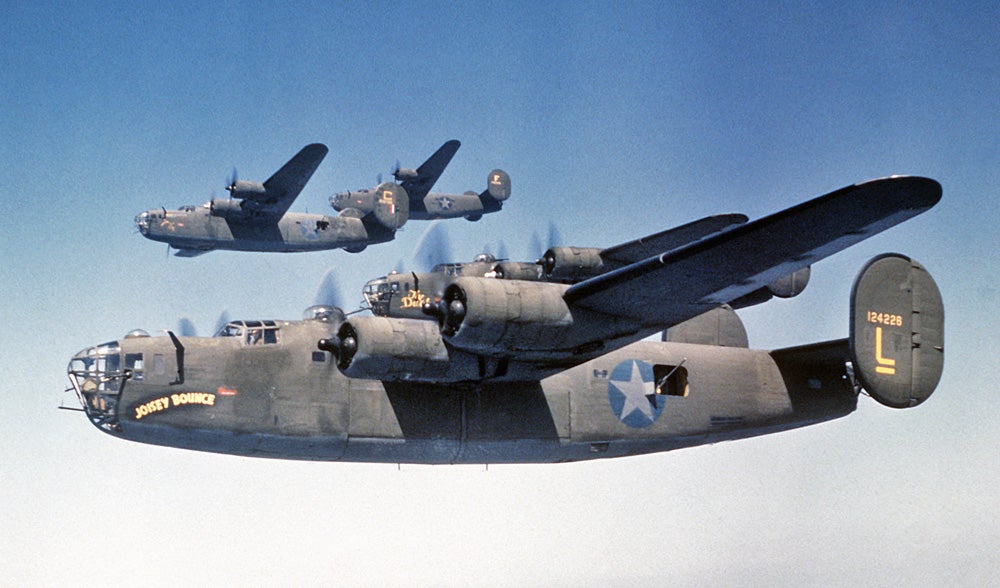
December 29, 1939 – The first flight of the Consolidated B-24 Liberator.
During World War I, the first strategic bombing mission was carried out by Germany on August 6, 1914 when a Zeppelin dropped bombs on the city of Liège in Belgium. Though the majority of raids carried out in the war were tactical bombing missions against specific military targets, the development of strategic bombers to attack enemy cities progressed, along with concepts of how large-scale strategic bombing might be used to win future wars. One of the leading proponents of bomber theory following WWI, Italian general Giulio Douhet , espoused the power of strategic bombing , saying that the bomber alone could bring about the capitulation of an enemy in war. Many military planners adopted his theories, particularly Billy Mitchell in the US, though in practice, the results were mixed at best in the experience of the Second World War. During the interwar period, the United States began the development of heavy bombers, with the Boeing B-17 Flying Fortress becoming America’s most important bomber in the early stages of WWII. In 1938, the year the B-17 entered service, the US Army Air Corps (USAAC) requested that Consolidated Aircraft build the B-17 under license in order to provide enough bombers for the looming war in Europe. But, rather than build somebody else’s bomber, Consolidated thought they could do better by designing their own bomber, particularly one that could carry more bombs, and at a greater range, than the Flying Fortress. In 1939, the USAAC asked Consolidated to formally propose a new bomber, and Specification C-212 was written to match Consolidated’s design. The B-24 made use of the Davis wing , a relatively thin wing that was found to have much better laminar flow characteristics than contemporary wings. The wing provided better lift and better high speed performance, though its construction made it more susceptible to damage. It was mounted high on the fuselage of the new bomber, which allowed room for two bomb bays, each of which was the same size as the one in the B-17. Taken together, the bomb bays were capable of carrying a total of 8,000 pounds of bombs. The Liberator was also recognizable by its use of a double tail, and while tests showed that a single tail improved handling, all production models of the B-24 were built with the double tail. The single tail was incorporated in the later PB4Y-2 Privateer maritime patrol variant.
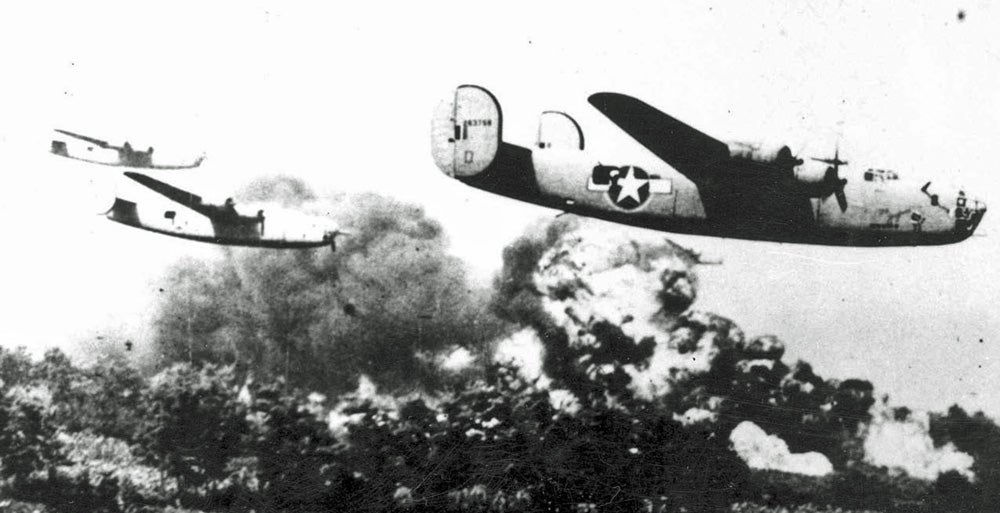
The Liberator first entered service with the RAF in 1941, where it was used as a bomber, maritime patrol aircraft, and very effectively as a cargo aircraft. With its excellent range, the Liberator became the first Allied aircraft to fly regularly across the Atlantic ocean. The B-24 entered service with the USAAC late in 1941, and was soon flying in every theater of war in which the US fought, becoming the mainstay of American strategic bombing forces. Nearly 20,000 Liberators built during the war in a host of variants, with over 8,000 built by the Ford Motor Company. The B-24 holds the record for the most-produced heavy bomber in history, the most-produced multi-engine aircraft in history, and the most-produced American military aircraft in history. By 1945, most Liberators were retired and scrapped, though the Privateer continued serving into the Korean War. Of the nearly 20,000 Liberators produced, only two airworthy examples remain today, one flying with the
Commemorative Air Force
in Addison, Texas, and the other with the
Collings Foundation
in Stow, Massachusetts.
(US Air Force photos)
!!! UNKNOWN CONTENT TYPE !!!
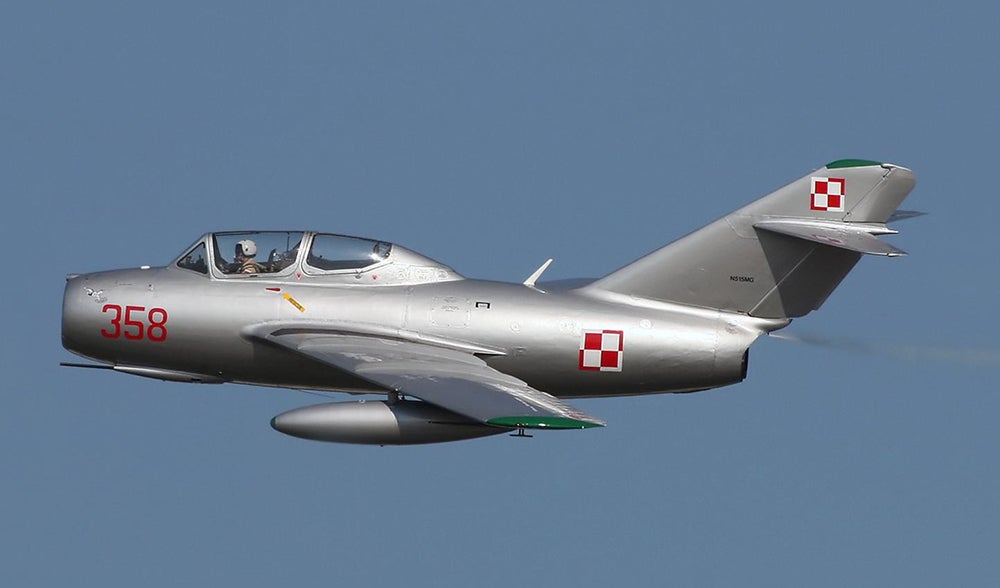
December 30, 1947 – The first flight of the Mikoyan-Gurevich MiG-15.
By the end of World War II, German aviation technology had outpaced that of the Russia and the western allies in many ways. The Luftwaffe fielded the first operational jet fighter in the Messerschmitt Me 262, experimented with rocket power, and designed some of the first warplanes with swept wings. As the Allies closed down on Germany in the last months of the war, the European allies and Russia both raced to capture as much technology and scientists as they could. The Russians were able to secure turbojet technology from German engineers, but they were unable to produce a reliable jet engine. So, they turned to Britain to see if they could procure the Rolls-Royce Nene engine. Stalin was convinced that the British would never let them have one, but inexplicably, the British gave the Russians sample engines and the blueprints for their construction. Now the Russians had a reliable engine, but they still needed a fighter to put it in. Along with the technological data for jet engines, the Russians also obtained data from Germany regarding the benefits of a swept wing (information the Americans would use also), as well as a number of unfinished German aircraft. One of those was the Focke-Wulf Ta-183 , a design for a swept-wing fighter that never entered production.

While the Russians have never really admitted it, it is likely that the Focke-Wulf design had a heavy influence on the MiG-15, with its 35-degree swept wing mounted in the middle of the fuselage and its swept tailplane. The new Russian fighter bore a very strong resemblance to the Ta-183, and it is also likely that captured German technicians helped with the design of the new Russian fighter. The MiG-15, NATO reporting name Fagot , was originally designed to defend Russia from waves of enemy bombers. For that purpose, it was armed with two 23mm cannons and one 37mm cannon, while contemporary American designs still carried multiple machine guns for aerial dogfighting. This armament choice put the MiG-15 at somewhat of a disadvantage during the Korean War, when the low rate of fire and low muzzle velocity made it difficult to hit small, maneuverable targets. Still, when the MiG-15 appeared in the skies over Korea in 1950, Allied pilots were surprised by the little fighter’s maneuverability. It clearly outclassed American straight-wing designs, and its arrival sparked a flurry of activity in the West to produce a comparable swept-wing fighter. The Americans responded with swept-wing versions of naval fighters such as the Grumman F-9 Cougar , and North American replied with F-86 Sabre . As good as these fighters were, the MiG-15 still enjoyed the advantage of a better climb rate, higher ceiling and better acceleration. It was only the superior training of the American pilots that allowed them to gain air supremacy in Korea. The Soviet Union produced a staggering 18,000 MiG-15s, a third of those under license in Soviet bloc countries. Over forty nations received export versions of the MiG-15, and it continued serving throughout the Cold War and was developed into the more advanced MiG-17 which first flew in 1950. While most MiG-15s have long since been retired, it is still flown by North Korea as a jet trainer. (Photo by D. Miller via Wikimedia Commons ; Model photo by de:Benutzer:Stahlkocher via Wikimedia Commons )
!!! UNKNOWN CONTENT TYPE !!!
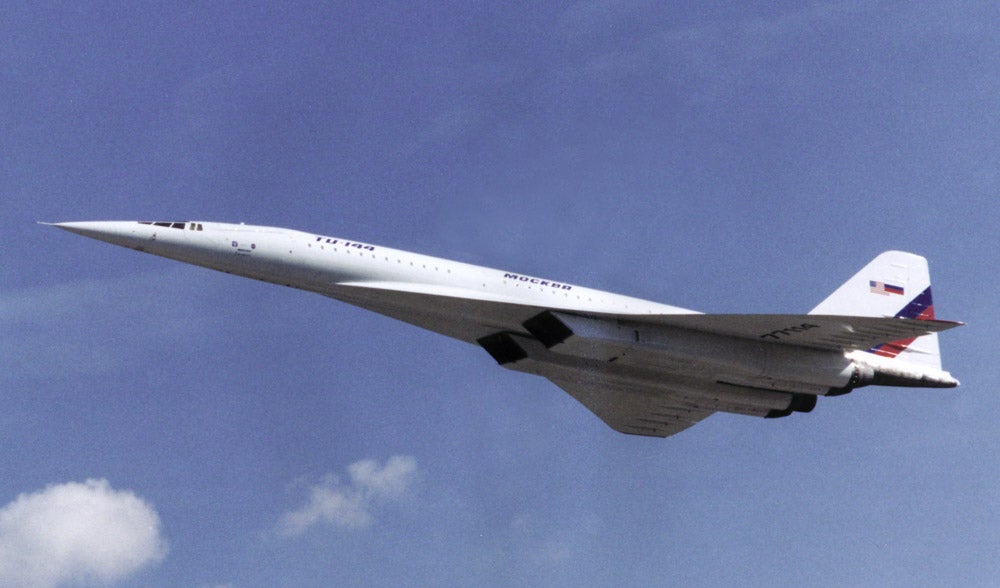
December 30, 1968 – The first flight of the Tupolev Tu-144. Throughout the history of aircraft development, the quest for speed has always been one of the primary aims of aircraft designers. The arrival of the jet engine in World War II pushed the limits of speed well beyond what was capable with even the fastest piston-powered aircraft, and the next goal was reaching the speed of sound, or Mach 1. On October 14, 1947, USAF test pilot Chuck Yeager flew the Bell X-1 beyond Mach 1, and supersonic flight became a standard feature of many fighters and eventually bombers, but it would be more than twenty years before the first supersonic passenger plane took to the skies. That aircraft was the Russian-built Tupolev Tu-144, and, while it beat its Anglo-French competitor Concorde into the air by one month, it had a much more checkered career. Development of the Tu-144 (NATO reporting name Charger , and more commonly known in the West as Concordski ) began in July of 1963 at the same time as its Western counterpart. And while it bore a strong resemblance to European design, it was a much different airplane. Though the Tu-144 and Concorde are of comparable designs, the Russian supersonic transport (SST) had a much less advanced system of braking and engine control. This was largely due to the fact that they were unable to purchase the system used on the Concorde, as trade restrictions prevented the sale of technologies that could be used militarily. But the two aircraft shared other technologies, and both SSTs used the aircraft’s fuel as a coolant for the cabin air conditioning system and to cool the hydraulic system. But the most notable difference in the design between the two aircraft was Tupolev’s addition of two retractable “mustache” canards at the front of the fuselage. Since the wing of the Tu-144 was not as advanced as that of the Concorde, these canards improved handling at low speeds.

Unfortunately, the Tu-144 is perhaps best known for the highly publicized crash of the second prototype in 1973 during a demonstration at the Paris Air Show, killing the crew of six as well as eight on the ground. Accounts differ on what caused the crash. The Russians claim it was caused by a French Mirage fighter that was trying to photograph the airliner and got too close, while others suggest that the pilots were trying too hard to impress the crowed and flew the aircraft beyond its capabilities. Regardless, the crash was a major embarrassment for both the Soviet government and Tupolev, and set the program back. Still, the Tu-144 entered service in 1975, again ahead of the Concorde, but did so by flying mail and other cargo, and didn’t make its first passenger flights until 1977. But a second crash in 1978 led the Russian government to ban its use for further passenger flights, and the Tu-144 ended its passenger career after just 55 commercial flights. Cargo flights continued until 1983 before serious reliability issues and lack of funding ended the program for good. Later in its career, the Tu-144 was used to train pilots in the Soviet Buran space shuttle program, and one was flown by NASA as a supersonic testbed. (NASA photo; Photo by Christian Volpati via Wikimedia Commons )
!!! UNKNOWN CONTENT TYPE !!!
!!! UNKNOWN CONTENT TYPE !!!
!!! UNKNOWN CONTENT TYPE !!!
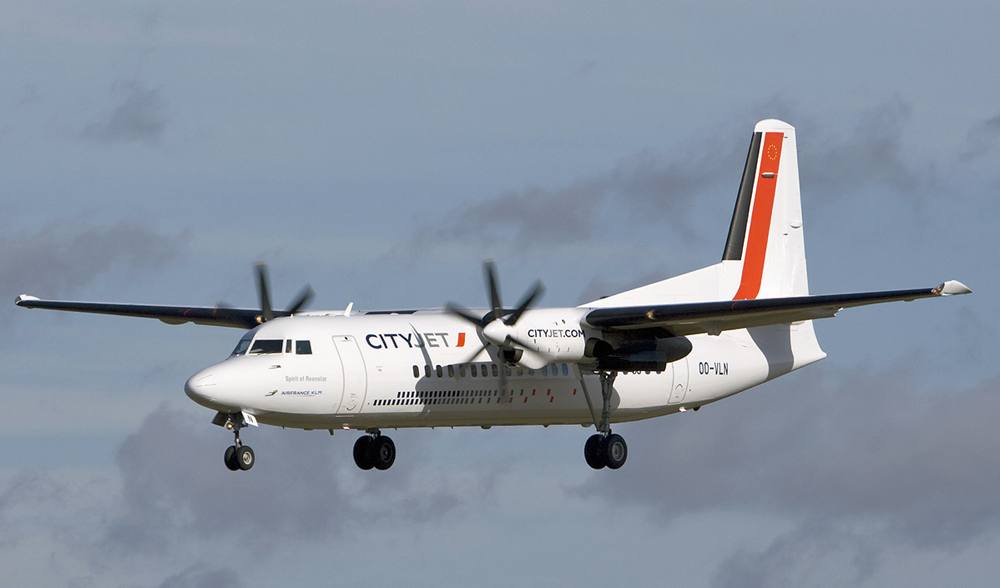
December 28, 1985 – The first flight of the Fokker 50, a turboprop transport aircraft and successor to the highly successful Fokker F27 Friendship . The F-50 was built from a stretched F27-200, with the most significant difference being more powerful and fuel efficient Pratt & Whitney Canada PW125 engines and an electronic flight and engine management system. The F50 can accommodate up to 62 passengers, and a still longer cargo version, the Fokker 60, has also been developed. Produced from 1987 to 1997, a total of 213 of both types have been built, with many remaining in service today. (Photo by Peter Bakema via Wikimedia Commons )
!!! UNKNOWN CONTENT TYPE !!!
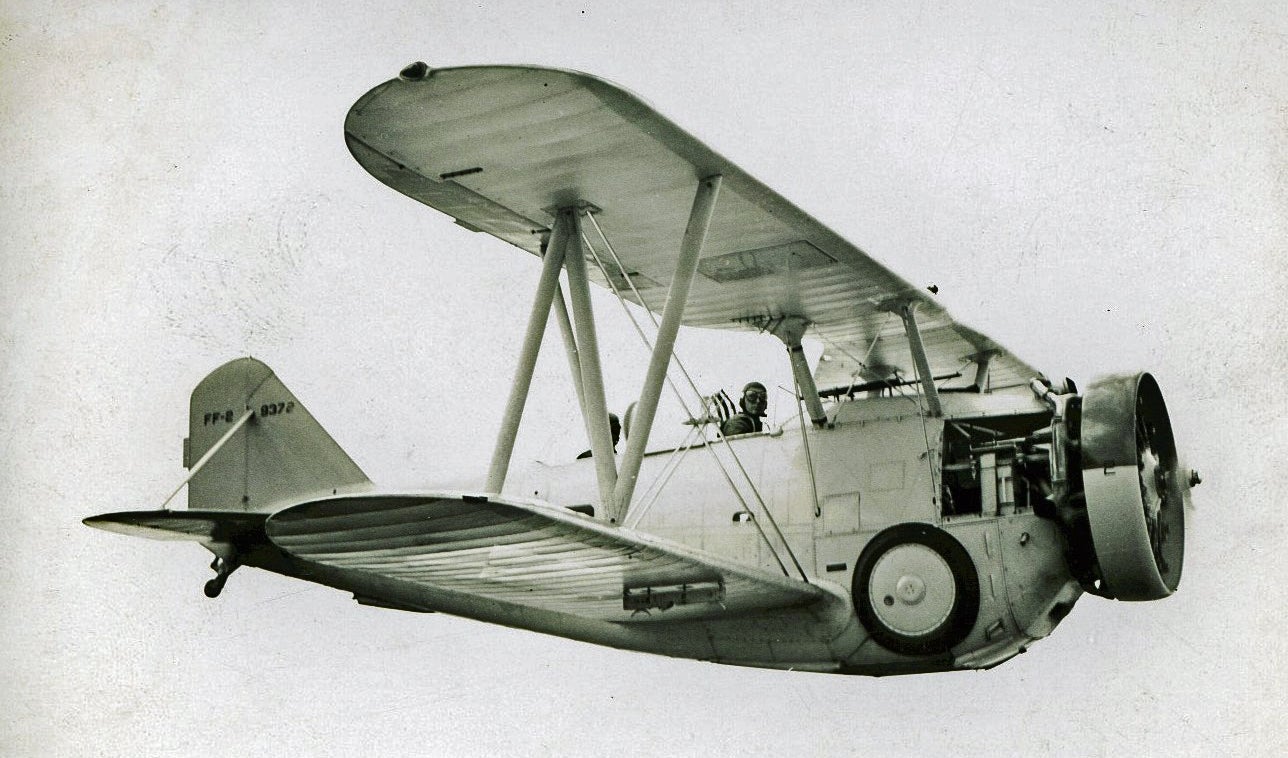
December 29, 1931 – The first flight of the Grumman FF.
Grumman has a long history of providing aircraft for the US Navy, and it all started with the FF, Grumman’s first naval fighter and the US Navy’s first fighter with retractable landing gear. The FF featured an enclosed cockpit, all-metal fuselage and fabric covered wings, and the lineage of the FF can be traced all the way forward to the
Grumman F4F Wildcat
. In addition to American FFs, the Grumman fighter was also produced under license in Canada, where it was known as the Goblin, and in Spain, where it was known as the Delfin (Dolphin). The FF was retired in 1940, just before the outbreak of WWII.
(US Navy photo)
!!! UNKNOWN CONTENT TYPE !!!
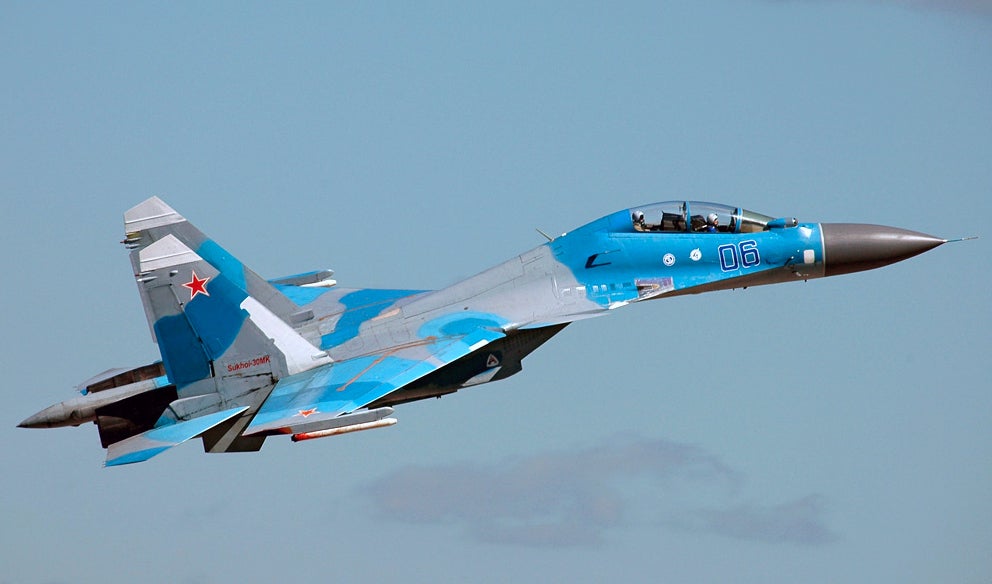
December 31, 1989 – The first flight of the Sukhoi Su-30.
Known to NATO as the
Flanker
, the Su-30 is an all-weather, air-to-air and air-to-surface fighter that employs thrust vectoring for so-called
supermaneurverability
. The Su-30 is a development of the
Sukhoi Su-27
, and was primarily developed for export. Powered by pair of
Saturn AL-31
afterburning turbofan engines, the Su-30 is capable of Mach 2 in level flight with a range of 3,000 kilometers. The Flanker is built by two different companies in a myriad of configurations for its international customers, and several have recently been deployed to Syria in support of the Assad regime.
(Photo by Sergey Krivchikov via
Wikimedia Commons
)
!!! UNKNOWN CONTENT TYPE !!!
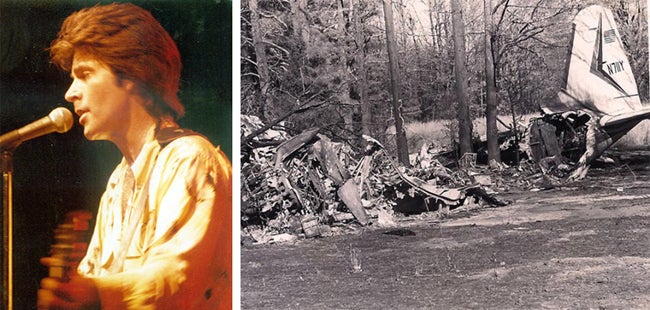
December 31, 1985 – Musician Ricky Nelson dies in a plane crash.
While flying from Guntersville, Alabama to Dallas, Texas, Nelson’s leased
Douglas DC-3
(N711Y) crashed just two miles from the runway after an emergency diversion for smoke in the cabin. The pilots, who survived but were seriously burned, provided differing accounts of the events leading up to the crash, though they both agreed that a gas heater in the cabin had been malfunctioning prior to the crash. The crash caused the deaths of seven of the nine passengers, and the cause was officially listed as unknown, though it was likely caused by a fire started by the recalcitrant cabin heater.
(Crash photo author unknown; Nelson photo by anyjazz65 via
Wikimedia Commons
)
!!! UNKNOWN CONTENT TYPE !!!
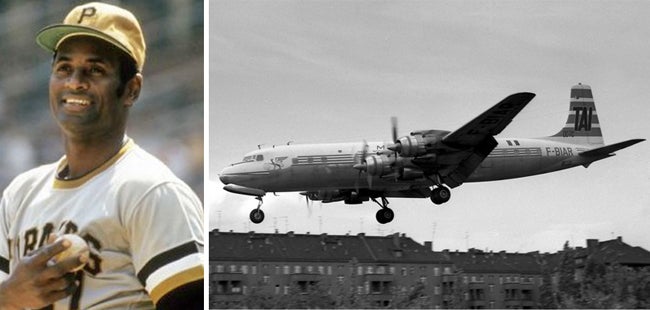
December 31, 1972 – Baseball star Roberto Clemente dies in a plane crash. Clemente, a right fielder for the Pittsburgh Pirates in his 18th MLB season, was well known for charity work in his native Puerto Rico as well as other parts of Central America and the Caribbean. Following a devastating earthquake in Nicaragua, Clemente organized relief flights to take supplies to the victims. While accompanying the third relief flight, his chartered Douglas DC-7 crashed on takeoff from Puerto Rico, killing all on board. Clemente’s body was never recovered. Reports indicated that the plane, which was poorly maintained, was also overweight at the time of the crash. Clemente was posthumously inducted into the Baseball Hall of Fame the following year. (DC-7 photo by Ralf Manteufel via Wikimedia Commons ; Clemente photo author unknown)
!!! UNKNOWN CONTENT TYPE !!!
Author’s Note: This is the final installment in This Date in Aviation History.
!!! UNKNOWN CONTENT TYPE !!!
!!! UNKNOWN CONTENT TYPE !!!
!!! UNKNOWN CONTENT TYPE !!!
!!! UNKNOWN CONTENT TYPE !!!
!!! UNKNOWN CONTENT TYPE !!!
!!! UNKNOWN CONTENT TYPE !!!
!!! UNKNOWN CONTENT TYPE !!!
!!! UNKNOWN CONTENT TYPE !!!
If you have enjoyed these Aviation History posts, please let me know in the comments. And if you missed any of the past articles, you can find them all at
Planelopnik History
.
!!! UNKNOWN CONTENT TYPE !!!
 "Rust and Dust - Oppositelock Forever" (rustanddust)
"Rust and Dust - Oppositelock Forever" (rustanddust)
12/31/2016 at 12:47, STARS: 0
Thanks again, ttyymmnn.
 "Viggen" (viggen37)
"Viggen" (viggen37)
12/31/2016 at 12:48, STARS: 1
Thanks for all the work you put into this. And I like how the last first flight was for one of my favorite aircraft, the Su-30.
 "ttyymmnn" (ttyymmnn)
"ttyymmnn" (ttyymmnn)
12/31/2016 at 12:49, STARS: 2
You’re welcome. And thanks for your informed comments. It’s been fun, and I’d love to keep going. But duty calls, and it’s time to put it to bed.
 "someassemblyrequired" (someassemblyrequired)
"someassemblyrequired" (someassemblyrequired)
12/31/2016 at 12:49, STARS: 0
Thanks - have really enjoyed this series.
 "ttyymmnn" (ttyymmnn)
"ttyymmnn" (ttyymmnn)
12/31/2016 at 12:57, STARS: 0
My pleasure.
 "Rusty Vandura - www.tinyurl.com/keepoppo" (rustyvandura)
"Rusty Vandura - www.tinyurl.com/keepoppo" (rustyvandura)
12/31/2016 at 12:57, STARS: 1
Nice work, Timo and you’ve finished with a bang.
Funny that I mentioned the Tri-Star a day ago and your piece leads with one today. I think I read that the autopilot on that flight became disengaged when the pilot leaned over and nudged the yoke with his chest when he was reaching for something. Can’t help but feeling stupid on behalf of that crew.
 "Rusty Vandura - www.tinyurl.com/keepoppo" (rustyvandura)
"Rusty Vandura - www.tinyurl.com/keepoppo" (rustyvandura)
12/31/2016 at 12:57, STARS: 0
What’s next?
 "Wheelerguy" (wheelerguy)
"Wheelerguy" (wheelerguy)
12/31/2016 at 12:57, STARS: 0
That’s an unfortunate name for a MiG.
Otherwise, thank you, sir, for providing weekly Planelopnik to Oppo. We appreciated all this.
(P.S.: When I get the time, I’ll show a quick sketch of my dream light fighter. I’ll thank you again because without this series, I’d have ended up with a longer road to understanding jet fighters.)
 "Spaceball-Two" (spaceball-two)
"Spaceball-Two" (spaceball-two)
12/31/2016 at 12:58, STARS: 0
Gonna miss this series. Great stuff!
 "ttyymmnn" (ttyymmnn)
"ttyymmnn" (ttyymmnn)
12/31/2016 at 13:02, STARS: 1
Thanks. You are essentially correct:
The NTSB noted that this transient occurred at the same time that the captain ordered the flight engineer to enter the electronics bay to visually check the NLG. The NTSB speculated that as he turned to address the flight engineer, he could have inadvertently applied a force to the control wheel sufficient to disconnect the altitude hold function.
Interesting read here: http://lessonslearned.faa.gov/ll_main.cfm?TabID=3&LLID=8&LLTypeID=2
 "ttyymmnn" (ttyymmnn)
"ttyymmnn" (ttyymmnn)
12/31/2016 at 13:02, STARS: 0
I’m going to miss it, too. Thanks for reading.
 "ttyymmnn" (ttyymmnn)
"ttyymmnn" (ttyymmnn)
12/31/2016 at 13:06, STARS: 0
Well, “fagot” is actually a bundle of sticks used for fuel. Normally, the derogatory term uses two Gs.
I’d like to see that drawing. I’m no aeronautical engineer, but in many cases, ugly planes don’t work terribly well.
In my career as a trumpet player, I have done my fair share of teaching. It can be laborious, but I’ve always believed that if I can inspire at least one student to something greater, then I have done my job. I’m glad that you were able get something tangible out of this series. It means that my job as a teacher continues, and is paying dividends. Thanks for reading.
 "ttyymmnn" (ttyymmnn)
"ttyymmnn" (ttyymmnn)
12/31/2016 at 13:07, STARS: 0
http://oppositelock.kinja.com/this-date-in-aviation-history-last-flight-out-1790369292
 "AfromanGTO" (afromangto)
"AfromanGTO" (afromangto)
12/31/2016 at 13:12, STARS: 0
Great write up! The FF is an interesting looking aircraft. Thank you again for writing all of these!
 "vondon302" (vondon302)
"vondon302" (vondon302)
12/31/2016 at 13:15, STARS: 1
As usual I learned something. Sad to see these go but totally understandable. Sit back and have a beer and soak in that glow of a job well done.
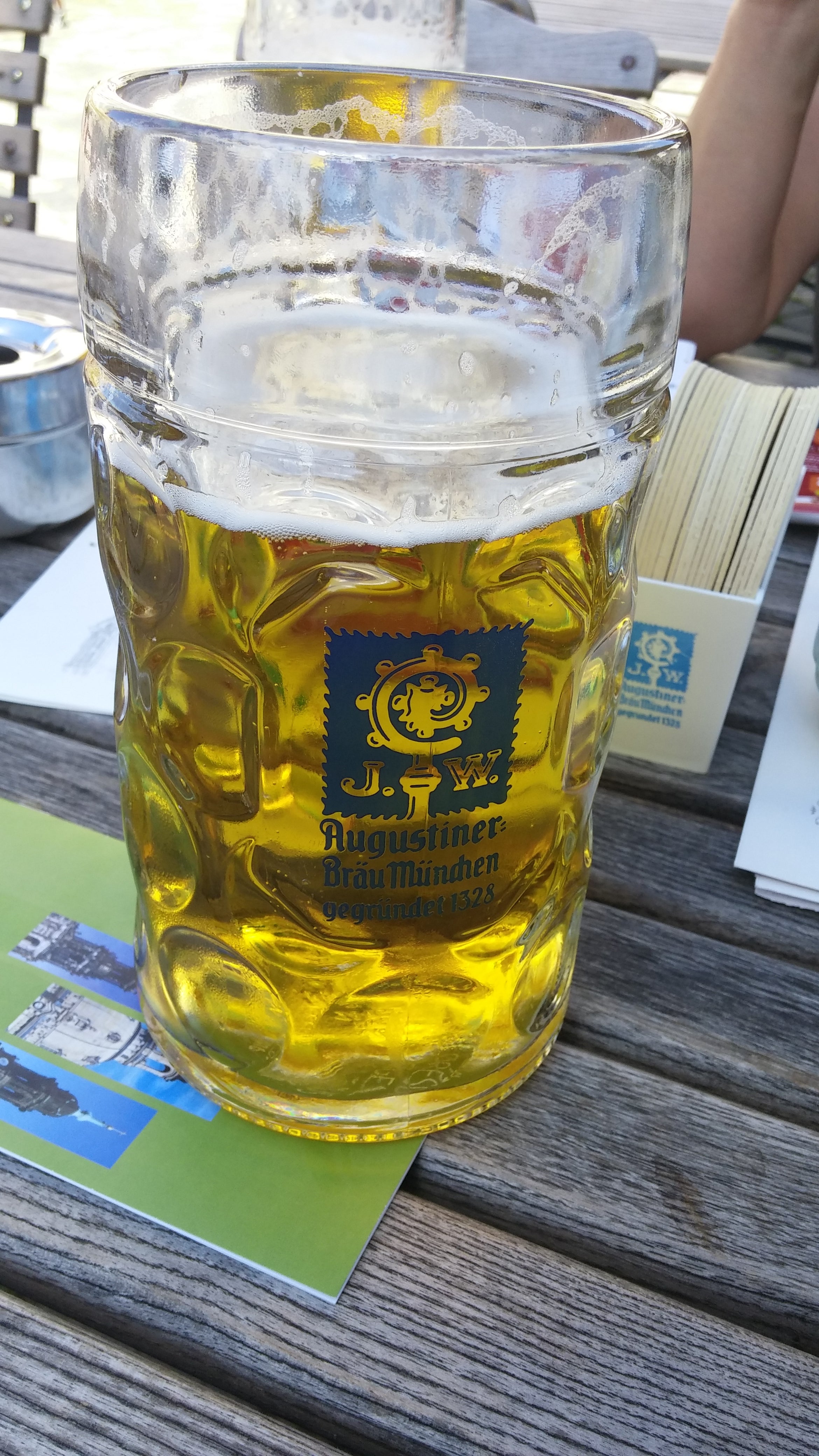
 "ttyymmnn" (ttyymmnn)
"ttyymmnn" (ttyymmnn)
12/31/2016 at 13:15, STARS: 2
What I like about the FF is that you can see both the past and the future of aviation in the same plane. I find transitional aircraft, like the first jets, or the first supersonic aircraft, to be fascinating studies on the emergence of new technologies.
You are very welcome. It’s been a pleasure, and thanks for reading.
 "ttyymmnn" (ttyymmnn)
"ttyymmnn" (ttyymmnn)
12/31/2016 at 13:20, STARS: 1
Thanks, and I’m glad you learned from my work. Once a teacher, always a teacher. And that beer looks damned good. I’m a German/Czech pilsener guy at heart. I’ll make it to Oktoberfest one of these days.
 "vondon302" (vondon302)
"vondon302" (vondon302)
12/31/2016 at 13:33, STARS: 0
Perfect. That was taken in Munich this summer and that town is fun any time of year. The beer was cheaper than cola in the Czech republic.

It was about 28 kroners to 1 dollar.
Thanks again!
 "ttyymmnn" (ttyymmnn)
"ttyymmnn" (ttyymmnn)
12/31/2016 at 13:36, STARS: 1
Mrs. Ttyymmnn and I went to France and Germany about 16 years ago, ending our trip in Munich. It’s a fabulous place, and much beer was drunk. Of course, I kept one of the giant steins from the biergarten. It’s full of loose change on my shelf.
 "RallyWrench" (rndlitebmw)
"RallyWrench" (rndlitebmw)
12/31/2016 at 15:06, STARS: 0
Always educational, thanks again for putting these together, and good luck in everything that’s next.
 "ttyymmnn" (ttyymmnn)
"ttyymmnn" (ttyymmnn)
12/31/2016 at 15:39, STARS: 1
Thanks for reading, and thanks for your participation. I always appreciated your contributions.
 "Birddog" (maintmgt)
"Birddog" (maintmgt)
12/31/2016 at 16:25, STARS: 0
Very informative and enjoyable series. Sad to see it go but I’m looking forward to the next chapter!
 "ttyymmnn" (ttyymmnn)
"ttyymmnn" (ttyymmnn)
12/31/2016 at 16:34, STARS: 0
Thanks, Birddog, I appreciate that. I might take a week or two off, but I’m looking forward to getting going on a new project. Happy New Year.
 "Smallbear wants a modern Syclone, local Maple Leafs spammer" (smallbear94)
"Smallbear wants a modern Syclone, local Maple Leafs spammer" (smallbear94)
12/31/2016 at 20:16, STARS: 1
DC3 springs immediately to mind.
For my part I love tracing the roots of something. EG, Timber billionaire->Boeing Aircraft->Some competence->A contract to build Curtiss seaplanes under license in WW1->Seaplane experience leads to an experimental airmail courier between Seattle and Victoria (iirc—Vancouver perhaps?)->bidding on other airmail routes and the formation of Boeing Air Transport, the direct predecessor to->United Airlines->Postmaster Brown’s “spoils conferences”->Roosevelt’s airmail cancellation->Introduction of legislature requiring: a) the separation of all airlines from companies who made aircraft or aircraft parts, and b) the removal by the airlines of any executives who had taken part in Brown’s spoils conferences->Dismissal of Phil Johnson as president of United->Phil Johnson has a hand in creating Trans-Canada Airlines, which later becomes->Air Canada.
 "You can tell a Finn but you can't tell him much" (youcantellafinn)
"You can tell a Finn but you can't tell him much" (youcantellafinn)
01/01/2017 at 01:14, STARS: 0
In honor of the end.
!!! UNKNOWN CONTENT TYPE !!!
Thanks for these, they’ve made for a lot of interesting reading.
 "ttyymmnn" (ttyymmnn)
"ttyymmnn" (ttyymmnn)
01/01/2017 at 01:16, STARS: 0
A fitting tribute. Thanks for reading, and best wishes to you and yours for the New Year.